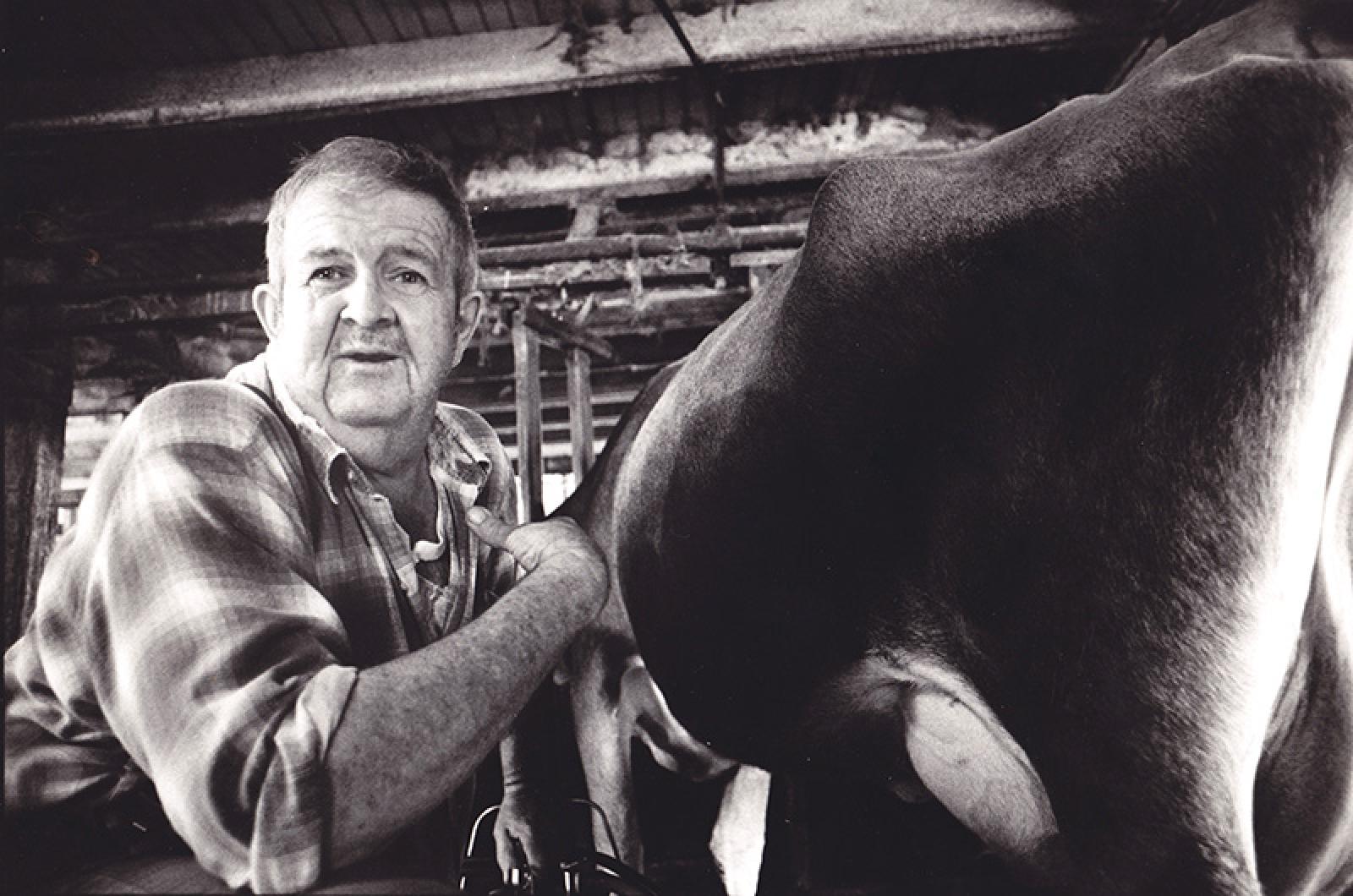From the Sept. 25, 1964 edition of the Vineyard Gazette by Joseph Chase Allen:
Ask of any of the old-timers of the Vineyard, and they will agree that the Island farm, capable of sustaining itself and its human and animal occupants, has almost arrived at the point where it is merely a tradition.
The history of Vineyard agriculture and stock-raising contains ample proof that, however many of the old-time men went to sea, most of them retired from seafaring and became farmers. There were many who, contented with a voyage or two which gave them some cash with which to operate, settled down on the land and remained.
But times have changed, people, markets and all things, and most Vineyard farms have been reclaimed by nature, so that meadow, tillage and pasturage have all joined the woodland so completely that it is difficult to locate the “inner boundaries” which once separated the fields from the pastures.
It is, therefore, refreshing, particularly to those oldsters who remember when things were vastly different, to observe one farm which continues to be self-sustaining after more than a century of supporting a number of owners, and on which has been kept abreast of changing times.
This is Nip-N’-Tuck Farm, the homestead of Mr. and Mrs. Fred Fisher and their family, on State Road in West Tisbury. Barring an ell built on the barn, and a new building near the entrance, there has been no great change in the appearance of this farm in seventy years at least, and probably the divisions of tillage and wood have been altered but little in more than a century.
How many men have lived upon this farm, working the land and raising livestock, probably no one knows. Seventy years ago this was a dairy farm, serving a milk route, and it is still doing just that. If anyone suggests that seventy years ago the farm sold raw milk, well, it still does, for the demand for raw milk is widespread. The farm also produces vegetables and some fruits.
Mr. and Mrs. Fred Fisher are young people who settled on this farm out of a love for the soil, because the farm had never been allowed to “go wild”, and because of the prospects offered by the Island’s cooperative dairy. They stocked the place and succeeded in maintaining a good-sized dairy herd, selling their milk to the dairy and making headway in establishing themselves. And then, after years of apparent progress, the dairy closed.
“We were left like all other Vineyard dairymen, broke, and as everyone knows, most of them sold out everything and started to do other things. But we wanted to remain in the business of farming and producing milk.
“We first advertised the sale of raw milk at the door, and what with advertising and a sign by the highway, we made a start. But my wife decided to establish a milk route, and the first day she started out, selling from the truck, she disposed of sixty quarts and signed up that many customers. From that point we have continued to make headway. We have combined our efforts with those of Sam Drake, who produces milk, and at the same time we have sold vegetables and fruits at the door, so to speak.
“But things had to change to keep up with the times. The people came to the barn in droves and we couldn’t have them there in such numbers. We decided on the building by the roadside, which we built to resemble a little house. And because the demand for pasteurized milk was considerable, we decided to put in a pasteurizer and all necessary equipment. Success is in sight and, but for this year’s drought, we would be sitting pretty.
“Ours is the only pasteurizing plant on the Island today, capable of processing 600 quarts of milk at a time. This is more than the daily Island production of milk. Up to last spring we were handling 350 quarts of milk a day and were swamped with orders for both raw and pasteurized milk. But the drought cut down our supply, and we had to maintain our route of regular customers. Things got so bad during the summer that we were bootlegging milk! But we still have our milk route.”
The rains have finally come, and the black soil, lying as level as a floor, is now green with the growing millet. The potato crop promises a bountiful yield, and the vegetable garden is still bearing its yellow squashes, red tomatoes and green cucumbers. It is unlikely that drought will afflict the farm again for years, for such is the pattern of such things, and in the meantime the farm is bright with the coloring of early autumn.
“There’s a lot of work to be done on a farm,” says Mr. Fisher, “but so it is with anything worth while.”
If, as some believe, the shades of ancients remain about the places they loved, the old owners of Nip-’N’-Tuck Farm must be thrilled by the sentiment expressed by its present proprietors. They are preserving in active operation a landmark. And they love the life they lead.
Compiled by Hilary Wallcox
library@mvgazette.com







Comments (2)
Comments
Comment policy »